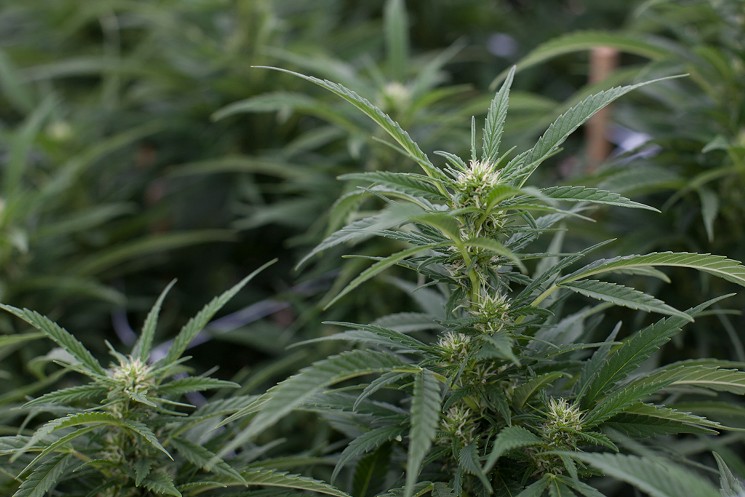A shift in perception demands a shift in education. This simple belief is what inspired us to create the Marijuana Education Initiative in 2015.
We worked together as educators at an alternative high school in northwest Colorado and witnessed a paradigm shift among our students. We noticed an increase in misinformation regarding youth marijuana impacts and a decrease in students’ perception of harm. We, like many educators, were hearing over and over: “It’s natural,” “It’s medicine,” and “It’s legal, so it can’t be so bad.”
We wanted to facilitate accurate and informed conversations with students about marijuana use. The shift in youth perception regarding marijuana requires a shift in the educational approach.
Colorado paved the way for marijuana legalization, and we decided it was time to pave the way for effective marijuana education. We did not want to teach outdated or inaccurate material, and we had no desire to adopt the antiquated “Just Say No” approach. Instead, we worked with professionals in the fields of medicine, adolescent brain development, and the endocannabinoid system to create a multifaceted, researched-based, marijuana-specific curriculum that addresses the complexities of marijuana’s impact on youth development.
We found the still-developing adolescent brain differs significantly from the brain of a fully developed adult; therefore, the effects of marijuana on the adolescent brain differ greatly as well.
During the adolescent years the prefrontal cortex, the portion of your brain that sits just behind your forehead, is still forming. The prefrontal cortex trims away neural connections that are not needed and begins the process of myelination, or wrapping nerve cells in myelin. Myelin is a fatty substance that sheathes nerve fibers to increase the speed of electrical communications in the brain. Think of myelin as a kind of insulation or protective coating for nerve cells. As this protective coating starts to form in the brain, advanced thinking abilities strengthen. This includes important executive functioning skills such as emotional control, flexible thinking, working memory, reasoning and problem solving.
This protective coating is not yet formed in adolescents. Myelination in the prefrontal cortex is not completed until the early to mid-20s, so teenagers have not yet developed these advanced thinking abilities. Nerve cells that are not yet myelinated are more susceptible to damage from substances such as drugs and alcohol, and therefore substance abuse can impact the development of these important areas of the brain.
Despite the science behind this, including numerous studies demonstrating the impacts marijuana can have on brain development, we have found across the nation that young people’s perception of the harm of recreational marijuana use is low.
And while research is still continuing, anecdotal evidence is demonstrating that marijuana can be an effective treatment for a number of illnesses. Non-smokable cannabis products that are high in cannabidiol (CBD) and low in tetrahydrocannabinol (THC) are used to treat a number of health conditions, such as epilepsy and childhood cancers. (CBD is the non-psychoacitve substance known for its therapeutic effects; THC is the psychoactive ingredient in marijuana.)
Schools have been entrusted with the responsibility to provide a balance between informing students of the risks of adolescent recreational use while still creating an environment of safety and understanding for medicinal marijuana patients, thus the critical need for a shift away from “Just Say No” toward a more progressive approach.
Jack’s Law, named after Jack Splitt, a Colorado teen who suffered from quadriplegic cerebral palsy and dystonia, requires schools in the state of Colorado to allow parents or designated caregivers to administer non-smokable cannabis treatments on school grounds to students who are registered medical marijuana patients. We stress that medicinal marijuana, like any medication, should be used under the supervision of a doctor, parent or caregiver.
We also discuss the risks of driving under the influence of marijuana, decreased inhibitions, and risk taking that often accompanies the use of any mind-altering substance. Many youth today do not understand that a marijuana-related infraction may impact their ability to get federal financial aid for college or even impact their ability to be accepted into certain post-secondary establishments.
We remain impartial about marijuana legalization, but feel that educational efforts must keep pace with changing norms.
The importance of talking to teens about the risks of recreational adolescent marijuana use cannot be overstated. Research demonstrates that parents and adult mentors have the greatest influence in a child’s life. Many believe this powerful influence even supersedes that of peers and social media. Putting the most current research-based information in the hands of parents, mentors and educators opens the door to helping adolescents make informed decisions about marijuana. A well-informed youth is an empowered youth.
credit:denverpost.com



